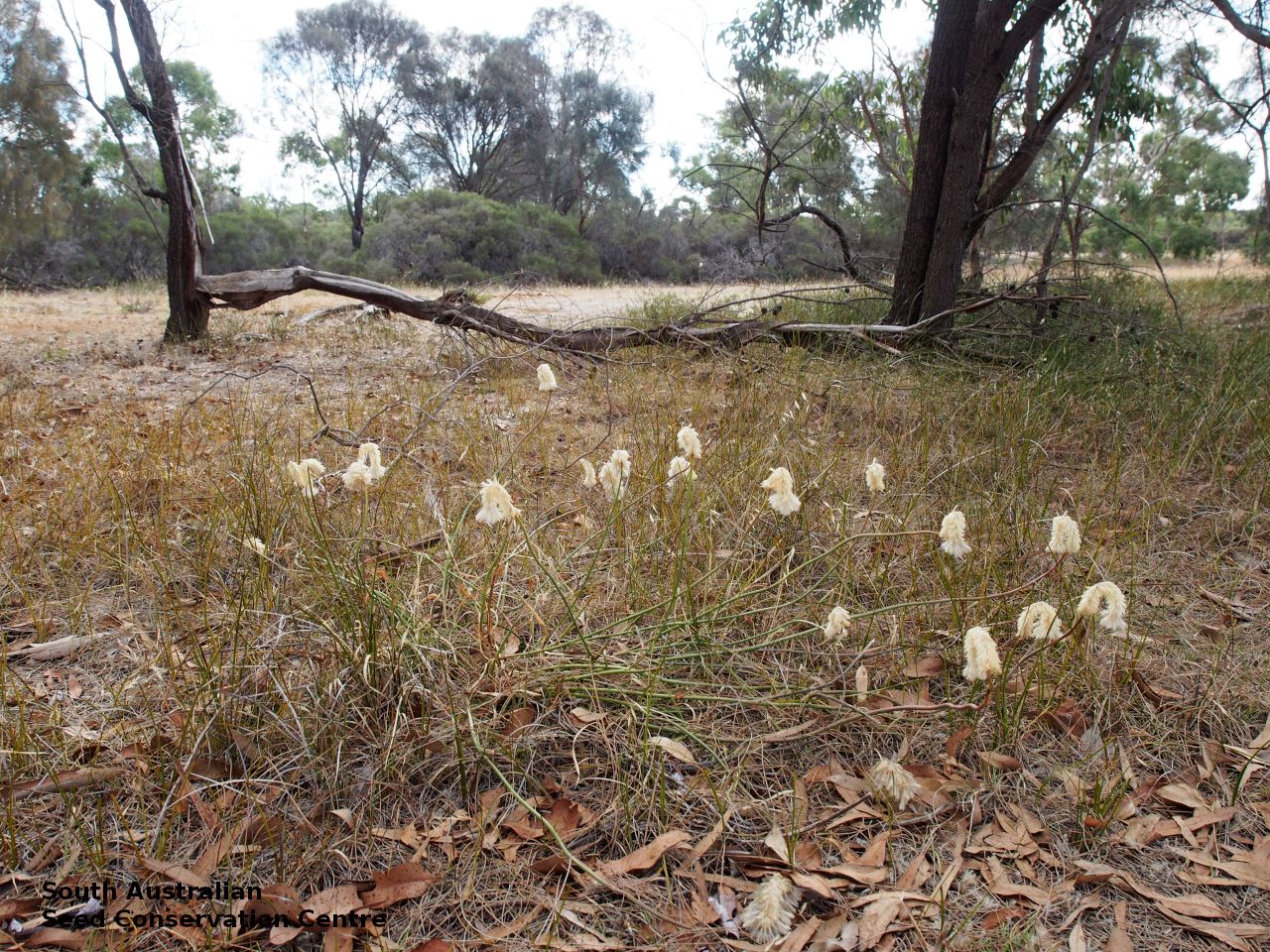






Botanical art
Prior names
Trichinium pachocephalum
Trichinium macrocephalum
Trichinium angustifolium
Ptilotus pachocephalus
Common names
Square-headed Fox-tail
Feather-head
Etymology
Ptilotus from the Greek 'ptilotos' meaning feathered or winged; referring to the hairy flowers. Macrocephalus from the Greek 'macros' meaning large and 'kephale' meaning head; referring to the species large flower-spike.
Distribution and status
Found in the lower South-east parts of South Australia, grows in a open damp grassy woodlands. Also found in all mainland states. Native. Common in South Australia. Common in the other states.
Herbarium region: South Eastern
NRM region: South East
AVH map: SA distribution map (external link)
Plant description
Annual or perennial herb with a long woody tap root. Stems semi-erect, up to 1.3 m tall, single or several-tufted, simple or occasionally branching, covered in hairs on young shoots from leaf axils. Leaves linear to narrow-lanceolate, lower ones to 160 mm long and 15 mm wide, usually tufted at the ground, upper ones shorter, subsessile, all glabrescent. Flower-spikes solitary, very variable in shape and colour, globular or conical to cylindrical, sweetly scented when fresh with greenish or greenish-cream, rarely silvery-white flowers with the glabrous tips usually pink. Flowers throughout the year especially between July and December. Fruits are globular to cylindrical head containing numerous long papery and hairy fruits, each containing one seed. Seed embryo type is peripheral.
Seed collection and propagation
Collect seeds between October and January. Be very careful when collecting this species as the fruits contain fine hairs that may cause an allergic reaction for some people. Collect the fruit heads when dried to a pale straw colour. Each fruit should come off the head easily when fingers are rubbed up the stem. Collect more fruits than required as not all fruits will have a viable seed. Be very careful when cleaning this species as the fruits contain fine hairs that may cause an allergic reaction for some people. To clean, rub the fruit heads gently to dislodge the seed at the base of each fruit. Use a sieve to separate the unwanted material. Store the seeds with a desiccant such as dried silica beads or dry rice, in an air tight container in a cool and dry place. Seed viability is usually high but seed availability tend to be low. Seeds are non-dormant, viable seed should germinate readily.
| Location | No. of seeds (weight grams) | Number of plants | Date collected | Collection number Collection location | Date stored | % Viability | Storage temperature |
|---|---|---|---|---|---|---|---|
| MSB | 2,800 (33.28 g) | 40+ | 30-Jan-2006 | HPV2906 South Eastern |
Number of plants: This is the number of plants from which the seeds were collected.
Collection location: The Herbarium of South Australia's region name.
% Viability: Percentage of filled healthy seeds determined by a cut test or x-ray.